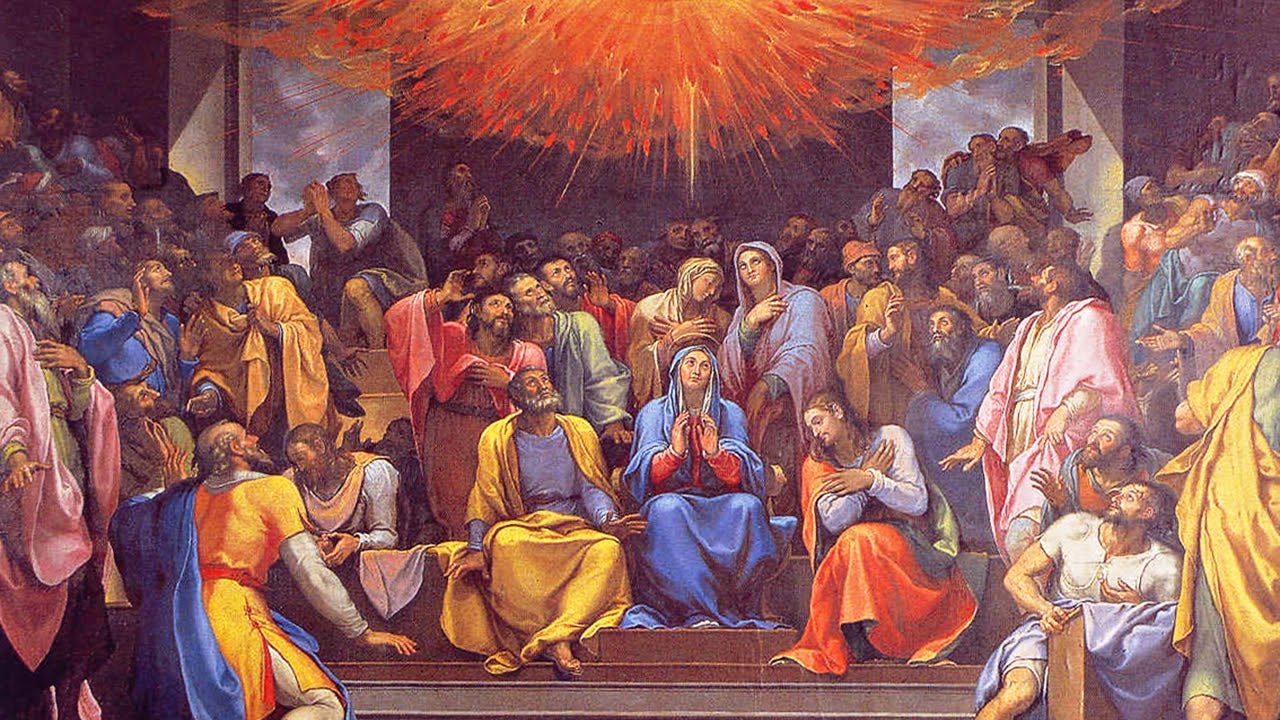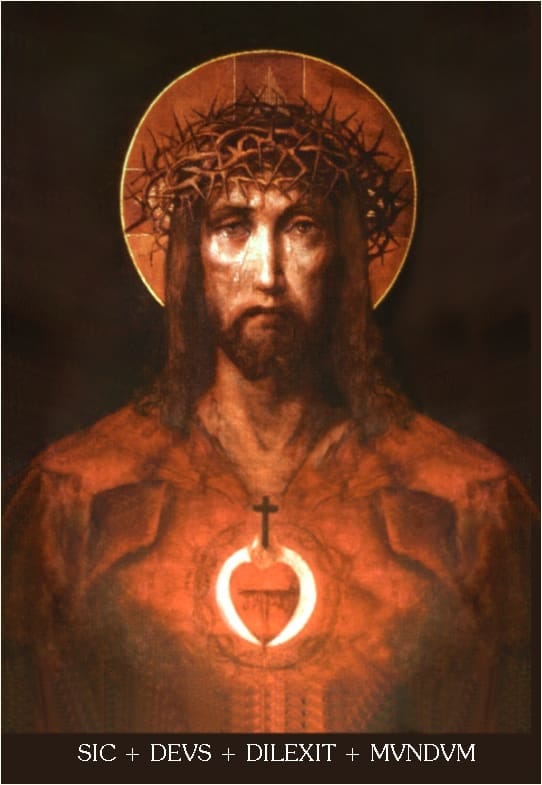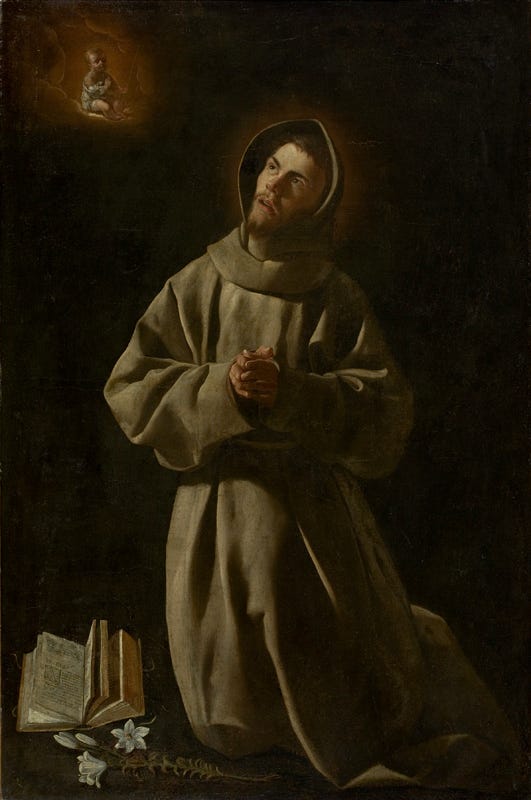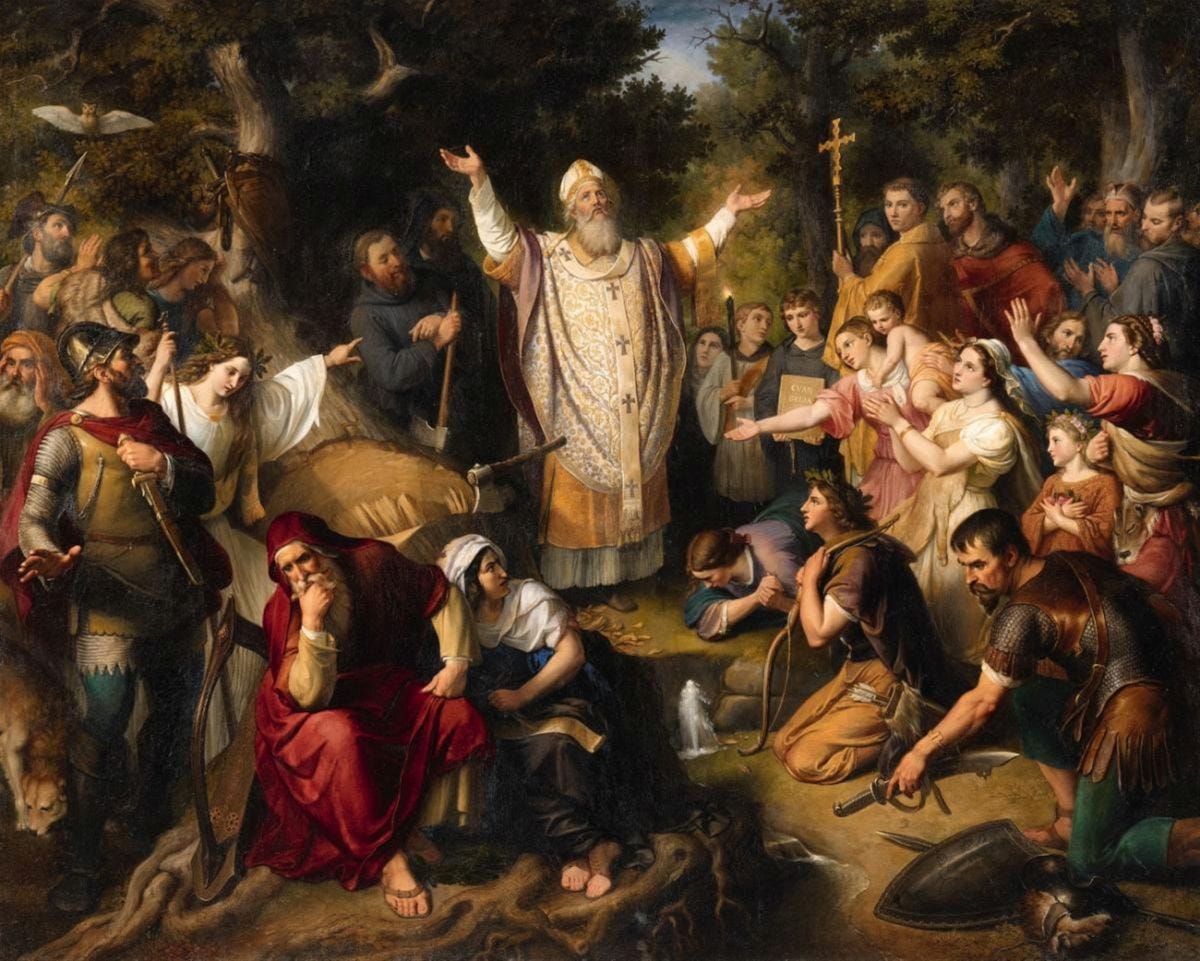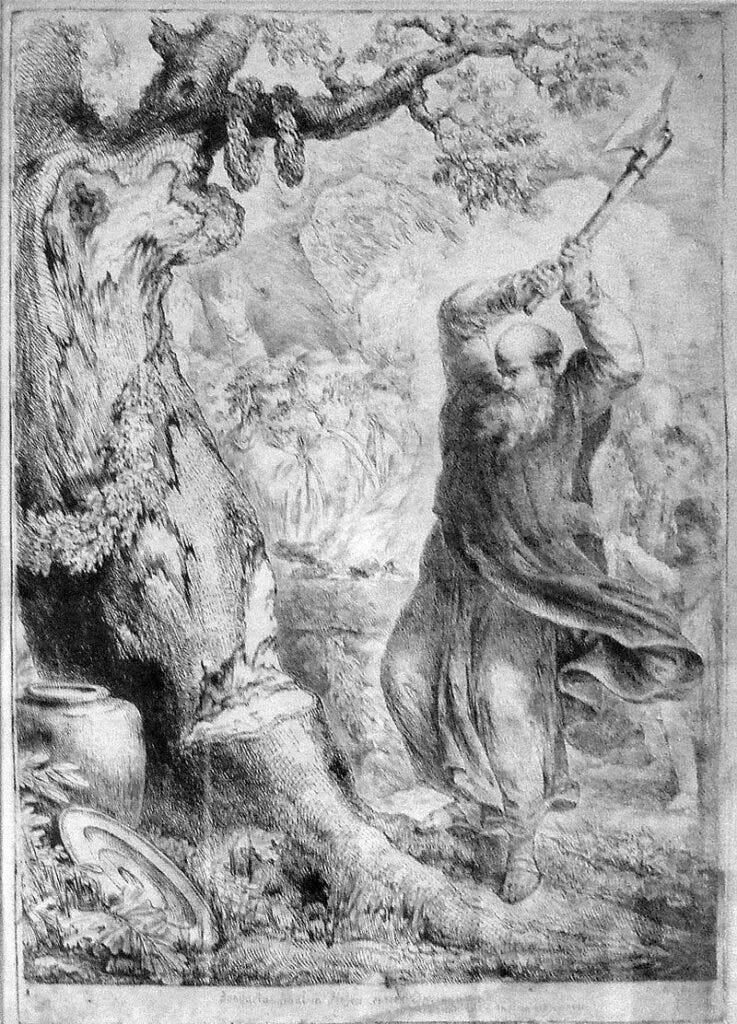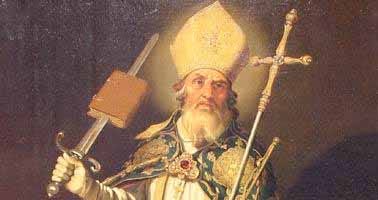Day 7 of the Novena to the Holy Ghost
Feast of St Boniface, June belongs to the Sacred Heart of Jesus + Day 5 of the Tredicina
This is the time during which the very first novena of the Church Age was made, when Mary and the Apostles prayed from Christ's Ascension to the Pentecost, a period of nine days (Acts 1-2).
We offer up our intentions…
To receive the 7 Gifts of the Holy Ghost:
Wisdom
Understanding
Counsel
Fortitude
Knowledge
Piety
Fear of the Lord
And
Bear forth the 12 Fruits of the Holy Ghost:
Charity
Joy
Peace
Patience
Benignity
Goodness
Longanimity
Mildness
Faith
Modesty
Continency
Chastity
Finally, we pray for Pope Leo XIV and all of the Cardinals and Bishops of the Holy Catholic Church that they may observe, protect, and hand on the venerable liturgy of the Roman Church and its Traditional Roman Rite. We pray especially for the Bishop of Charlotte and all bishops around the world whose hearts may have been hardened by modern influences, that they may return to the Faith handed down by the Apostles and the Saints of the Catholic Church.
Seventh Day:
Come, O Spirit of Counsel, help and guide me in all my ways, that I may always do Thy holy will. Incline my heart to that which is good; turn it away from all that is evil, and direct me by the straight path of Thy commandments to that goal of eternal life for which I long. Amen.
Recite one Our Father, one Hail Mary, and seven Glory Be's
June is dedicated to the Sacred Heart of Jesus
O dearest Jesus, Whose Most Amiable Heart excludes not even the greatest sinners if they turn to Thee, grant, we beseech Thee, to me and all penitent sinners a heart like unto Thine; That is, a humble heart that even in the midst of temporal honors loves a hidden life, a life little esteemed by men; A meek heart that bears with all and seeks to be revenged on no one; A patient heart that is resigned in adversity and happy even in the midst of most trying circumstances; A peaceful heart that is ever at peace with others and with itself; A disinterested heart that is always content with what it has; A heart that loves prayer and prays often and cheerfully; A heart that only desires that God be known, honored and loved by all His creatures; That grieves for nothing except when God is offended, Despises nothing but sin, Wishes for nothing but the Glory of God and its neighbor's salvation; A pure heart that in all things seeks God alone and desires to please Him; A grateful heart that does not forget but duly values the benefits of God; A strong heart that is daunted by no evil but bears all adversity for the love of God; A heart liberal to the poor and compassionate to the suffering souls in Purgatory; A well-ordered heart, whose joys and sorrows, desires and aversions, Nay, whose every motion is regulated according to the Will of God.
~Prayer of St. Clement Mary Hofbauer, C.S.S.R.
Tredicina or 13 days of St Anthony of Padua.
These prayers may be prayed on thirteen consecutive Tuesdays, most especially on the Tuesdays that precede the Feast of St. Anthony (June 13). This devotion may also be prayed on the thirteen days preceding the Feast of St. Anthony from May 31 to June 12.
Sixth Day
O glorious Saint! Thy ardent love of God merited for thee the happy privilege of receiving and caressing in thy arms the Divine Infant Jesus; we beseech thee, obtain for us the grace of receiving Him in the Blessed Eucharist with love and fervent devotion.
Pray one Our Father, Hail Mary, Glory Be, and St. Bonaventure’s Miraculous Responsory of St. Anthony
St. Bonaventure’s “Miraculous Responsory of St. Anthony”
If then you ask for miracles,
Death, error, all calamities,
The leprosy and demons fly,
And health succeeds infirmities.
The sea obeys, and fetters break,
And lifeless limbs thou dost restore,
Whilst treasures lost are found again,
When young and old thine aid implore.
All dangers vanish at thy prayer,
And direst need doth quickly flee;
Let those who know thy power proclaim,
Let Paduans say: “These are of thee.”
The sea obeys, and fetters break,
And lifeless limbs thou dost restore,
Whilst treasures lost are found again,
When young and old thine aid implore.
To Father, Son, may glory be,
And Holy Spirit eternally.
The sea obeys, and fetters break,
And lifeless limbs thou dost restore,
Whilst treasures lost are found again,
When young and old thine aid implore.
Pray for us, St. Anthony, that we may be made worthy of the promises of Christ.
Let us pray: O God! May the votive commemoration of St. Anthony, Thy Confessor and Doctor, be a source of joy to Thy Church, that she may always be fortified with spiritual assistance and may deserve to possess eternal joy. Through Christ Our Lord. Amen.
Born around 680 in England, Boniface entered a Benedictine monastery before being commissioned by the pope to evangelize modern-day Germany, first as a priest, and eventually as a bishop.
Under the protection of Charles Martel, Boniface traveled through all of Germany, restrengthening regions that had already been introduced to Christianity and bringing the light of Christ to those that hadn’t.
Boniface, “with his tireless activity, his gift for organization, and his adaptable, friendly, yet firm character,” found a great amount of success in his travels, said Pope Benedict XVI in 2009.
Here Boniface is described (albeit dramatized for storytelling) by Henry Van Dyke in "The First Christmas Tree" (1897):
“What a man he was! Fair and slight, but straight as a spear and strong as an oaken staff. His face was still young; the smooth skin was bronzed by wind and sun. His gray eyes, clean and kind, flashed like fire when he spoke of his adventures, and of the evil deeds of the false priests with whom he contended.” (1)
Around the year 723, Boniface was traveling with a small party in the region of Lower Hesse. He knew of a community of heathens near Geismar who, in the middle of winter, would make a human sacrifice (a child, typically) to the thunder-god Thor (yes, THAT Thor) at the base of their sacred oak tree, the “Thunder Oak”.
Boniface, in part from advice from a brother bishop, wished to destroy the Thunder Oak to not only save the life of the human sacrifice, but also to show the heathens that he would not be struck down by lightning at the hands of Thor.
As the story goes, Boniface and his companions, reaching the village on Christmas Eve, arrived at the place of the sacrifice in time enough to interrupt it.
With his bishops’ staff (crozier) in hand, Boniface approached the pagan crowd, who had surrounded the base of the Thunder Oak, saying to his group, “Here is the Thunder Oak, and here the cross of Christ shall break the hammer of the false god, Thor.”
The “Apostle of Germany” continued to preach to the astounded Germanic peoples, who were in disbelief that this slayer of Thor’s Thunder Oak had not been struck down by their god. Boniface looked beyond where the oak lay, pointing to a small, unassuming fir tree, saying:
“This little tree, a young child of the forest, shall be your holy tree tonight. It is the wood of peace… It is the sign of an endless life, for its leaves are ever green. See how it points upward to heaven. Let this be called the tree of the Christ-child; gather about it, not in the wild wood, but in your own homes; there it will shelter no deeds of blood, but loving gifts and rites of kindness.” (3)
And so, the Germans began a new tradition that night, one that stretches to the present day. By bringing a fir into their homes, decorating it with candles and ornaments, and celebrating the birth of a Savior, the Apostle of Germany and his flock gave us what we now know as the Christmas tree.1
But in 754, he decided to do what he'd set out to do in the first place: evangelize Frisia. He returned there -- but was almost immediately murdered by bandits there. His new converts took his body to Utrecht, then to Mainz, and, finally, to Fulda, where it can be reverenced today.
St. Boniface ("Sankt Bonifatius" in Germany) is the patron saint of Germany, brewers, and tailors. His symbols are the oak tree and leaf, an axe, sword, book, raven, and fox.
Customs
German parishes, especially those named for St. Boniface might have big celebrations today, as does Fulda, Hesse, Germany, where St. Boniface's relics lie in the Fuldaer Dom (the Fulda Cathedral). Every year, the Bonifatiuswallfahrt (Boniface Pilgrimage) is held on a Sunday near his feast. The pilgrimage begins at all the different parishes in Fulda, and ends at the Cathedral. There are also numerous pilgrimages on foot from parishes outside of Fulda area, some of which start in the middle of the night and reach the cathedral square around 9 a.m. Some come from even farther away on foot or by bike, making pilgrimages that last for several days.2
https://www.churchpop.com/thor-st-boniface-and-the-origin-of-the-christmas-tree/
https://fisheaters.com/stboniface.html




